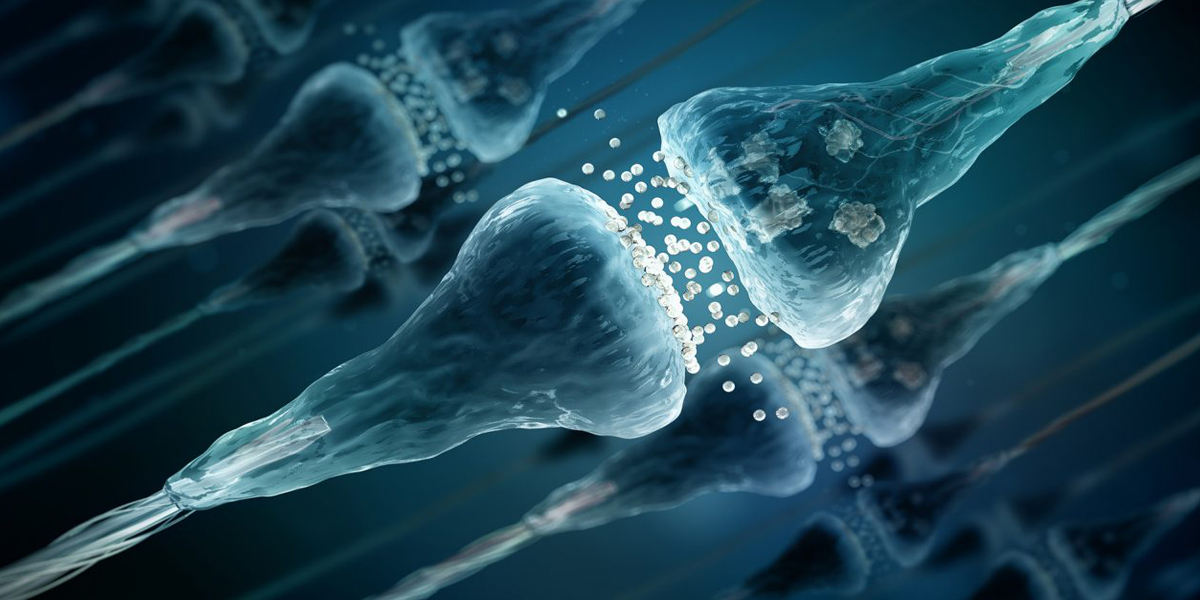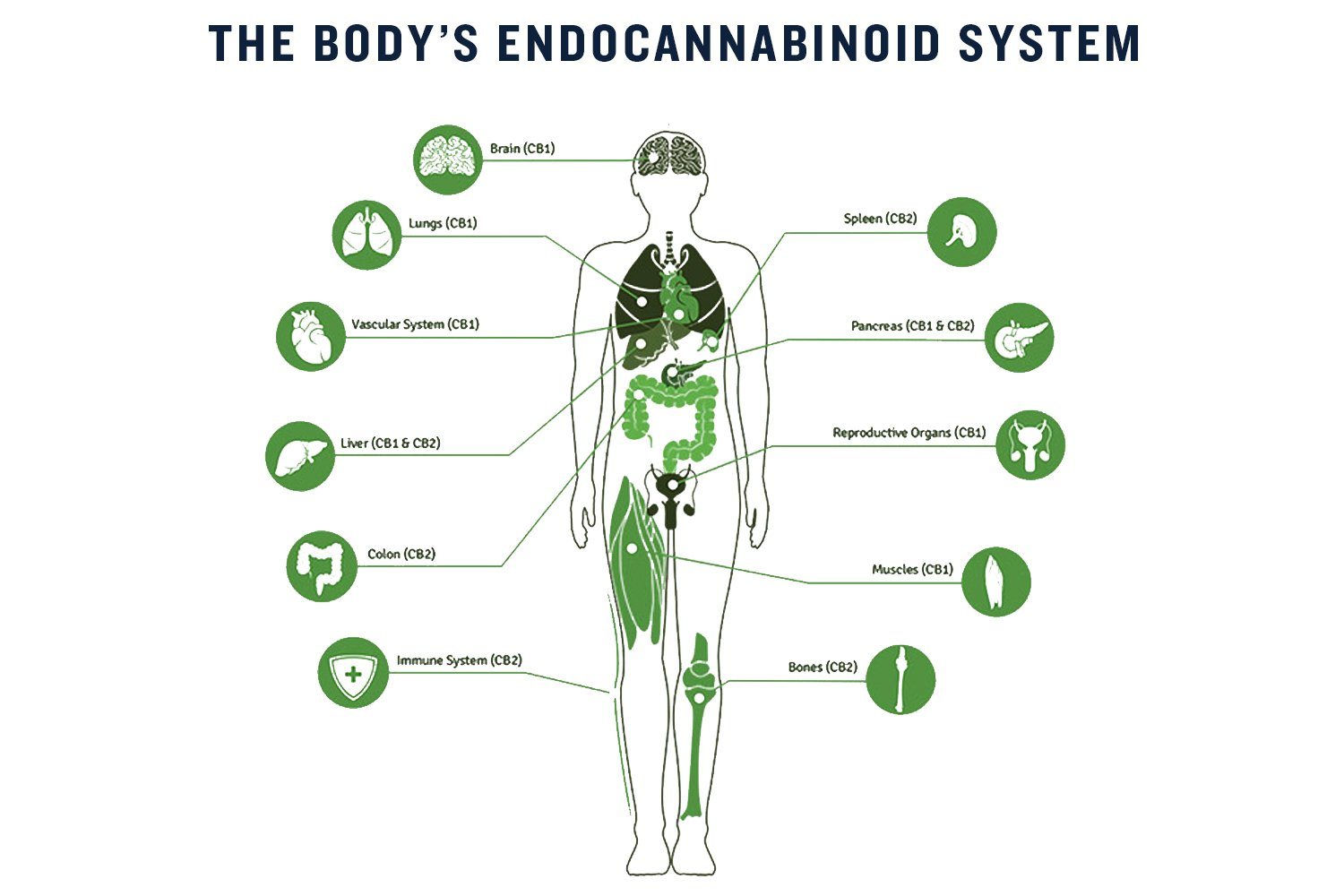The Endocannabinoid System; What Is It?

Delving into the Endocannabinoid System (ECS): A Master Regulator
In the intricate landscape of our biological makeup, the endocannabinoid system (ECS) emerges as a conductor, orchestrating the harmonious dance of our bodily functions. While the sympathetic nervous system takes the spotlight for our fight-or-flight response, the ECS quietly governs almost every nuance of our day-to-day existence. From learning and memory to emotional processing, sleep, temperature control, pain management, and immune responses, the ECS is the unsung hero at the heart of global research and groundbreaking drug development.
Discovered only in 1988 by Professor Allyn Howlett, by working the cannabis -phytocannabinoid line of research found that there were receptors in the organs and in the brains of her mammalian test subjects, far outweighing what they thought could be possible. Being so newly discovered, there is still quite a bit to be known how the Endocannabinoid System or ECS for short, works and how we can utilize it for better health options. Yet it is still quite exciting to see what has been discovered and how we can best apply that knowledge to our daily lives.
Understanding the ECS’s Network
The ECS is a sprawling network of chemical signals and cellular receptors intricately woven throughout our brains and bodies. Among these, the CB1 receptors in the brain stand out, outnumbering many other receptor types (like the G-protein coupled receptor – GPCR – that most synthesized drugs are connecting to). They, these CB1 and CB1 Receptors, act as vigilant traffic cops, finely tuning the levels and activities of various neurotransmitters. This immediate feedback mechanism allows them to regulate hunger, temperature, alertness, and more, ensuring our systems operate seamlessly.
This is the system within all of us that is always seeking to bring each of our biological systems back to Homeostasis, or as they say balanced as our body systems should be for full capacity functioning of the system and cells or molecules within.
 To activate these receptors, our bodies produce endocannabinoids—molecules bearing a structural resemblance to those found in the cannabis plant. Anandamide, (short for N-arachidonoylethanolamine) the first discovered endocannabinoid in 1992, aptly named after the Sanskrit word “ananda” for bliss, is a testament to the blissful dance of these tiny cannabis-like molecules in our brains.
To activate these receptors, our bodies produce endocannabinoids—molecules bearing a structural resemblance to those found in the cannabis plant. Anandamide, (short for N-arachidonoylethanolamine) the first discovered endocannabinoid in 1992, aptly named after the Sanskrit word “ananda” for bliss, is a testament to the blissful dance of these tiny cannabis-like molecules in our brains.
And 2-Arachidonoylglycerol – or 2-AG for short – was identified as an endocannabinoid by Dr. Mechoulam and his team, and also by Japanese scientists, in 1995. Compared to anandamide, 2-AG proved to be more potent, more prevalent, and more broadly expressed throughout the body. 2-AG levels in the human brain are approximately 170 times higher than those of anandamide, and 2-AG binds efficiently to both cannabinoid receptors, CB1 and CB2.
Anandamide and 2-AG are both lipid neurotransmitters that signal all over the brain and body to help maintain internal homeostasis amidst a barrage of ever-changing environmental inputs.
The cannabis plant, a companion to humanity for 5,000 years, capitalizes on this ancient cellular machinery to produce its effects. This was found out to be the case by a trio of researchers at Hebrew University in Jerusalem – Raphael Mechoulam, William Devane, and Lumir Hanus – isolated as that novel lipid neurotransmitter that binds with the CB1 receptor in pig brain tissue. Which was later found in all humans as well.
CB2 Receptors: Guardians of Immune Function
Beyond the brain, CB2 receptors take center stage, residing primarily in our immune tissues. Crucial for immune functioning, they play a pivotal role in modulating inflammation, contraction, and pain in conditions like inflammatory bowel diseases. Unlike their CB1 counterparts, stimulating CB2 receptors doesn’t induce the cannabis-associated high, making them promising targets for drug development.
ECS Unveiled: A Maestro in Learning and Memory
Unraveling Memory Mysteries
The ECS’s influence on learning and memory is evident through various research avenues. Recreational cannabis use, marked by high THC dosages, temporarily disrupts short-term memory—a phenomenon observed in numerous studies. Michael Pollan, in “The Botany of Desire,” postulates that the act of forgetting facilitated by cannabis aids the brain in functioning without sensory data overload. This insight opens doors to potential PTSD treatments, addressing the burdensome memories haunting those with the condition.
ECS: A Gateway to Medical Innovations
Beyond Cannabis: New Horizons in Drug Discovery
While ECS exploration initially aimed to understand an illicit substance, contemporary research has transformed it into a profound exploration of our intricate internal system. The ECS emerges as a gateway to understanding how our bodies learn, feel, motivate, and maintain equilibrium. As we navigate this dawn of discovery, anticipation mounts for groundbreaking medicines that may alleviate the anguish of some of humanity’s most challenging ailments. The ECS, with its mysteries unraveling, beckons us towards an exciting future of medical breakthroughs.
The endocannabinoid system (ECS), a physiological system of huge importance, is named after the plant that pointed the way to its discovery (The Cannabis plant in its many species). “We would not have been able to get there if we had not looked at the plant,” Mechoulam acknowledged. Everything scientists know about the endocannabinoid system was made possible by the original source of the plant.
It was during the 1990s that the basic components of the canonical endocannabinoid system were established. We have learned a lot more about the endocannabinoid system since then and its interactions with many other lipid signaling molecules and receptor networks beyond CB1 and CB2. We’ve learned that when the endocannabinoid system fails to function properly, plant cannabinoids can pick up the slack and provide relief. We recognize that cannabis, with both its THC and/or CBD compounds, is such a versatile therapeutic substance because it acts via cannabinoid receptors and other pathways that exist throughout the brain and body.
In closing, the journey into the ECS’s depths is a voyage into the very essence of our existence. As we unravel its complexities, the promise of healing and understanding shines bright on the horizon.

